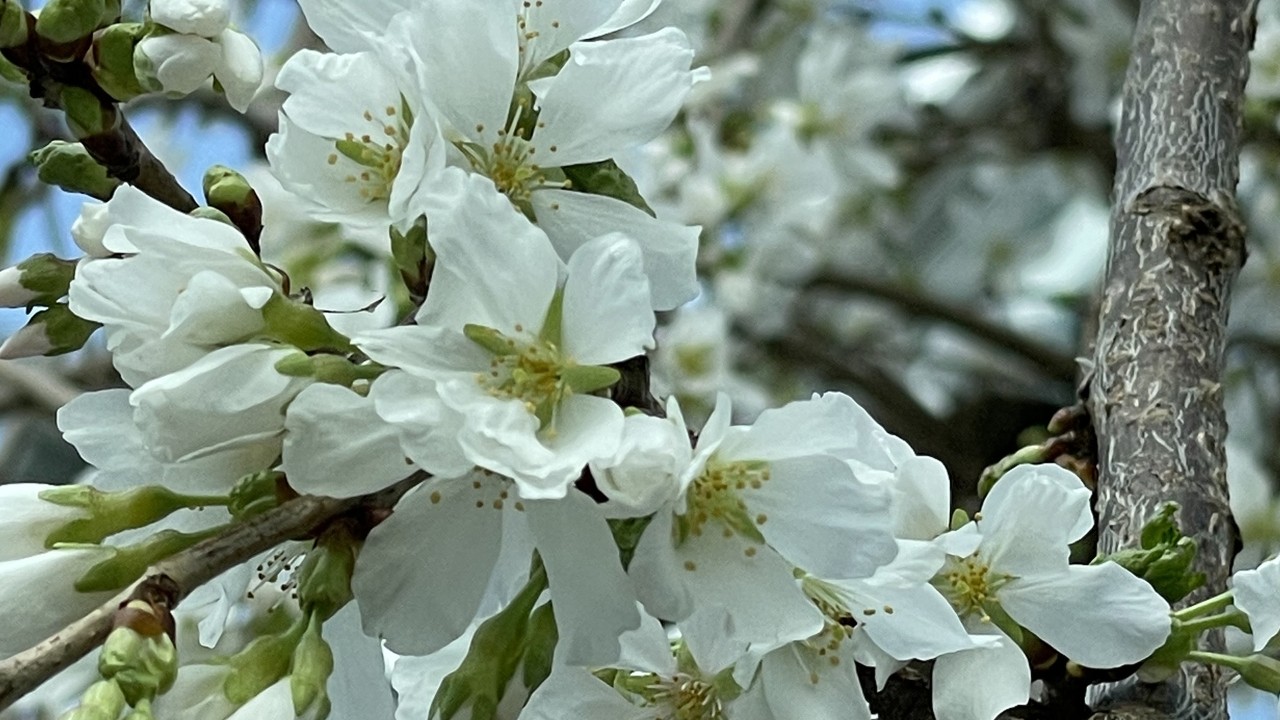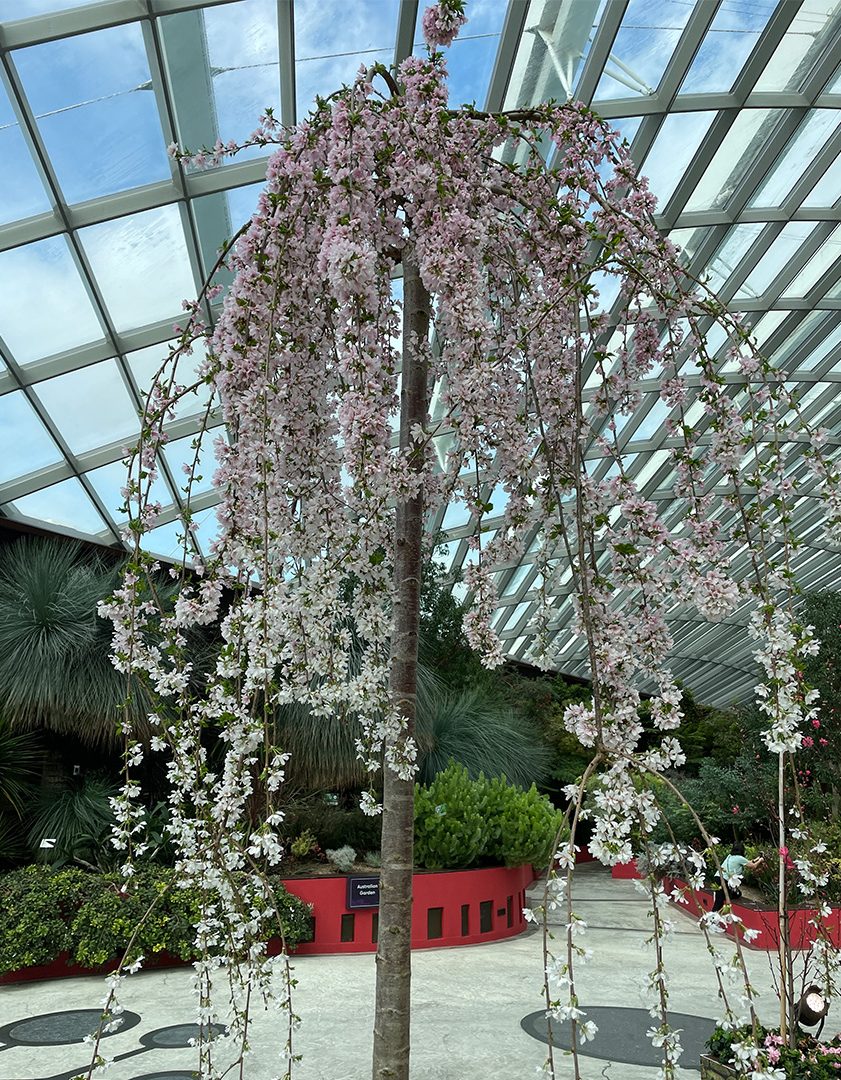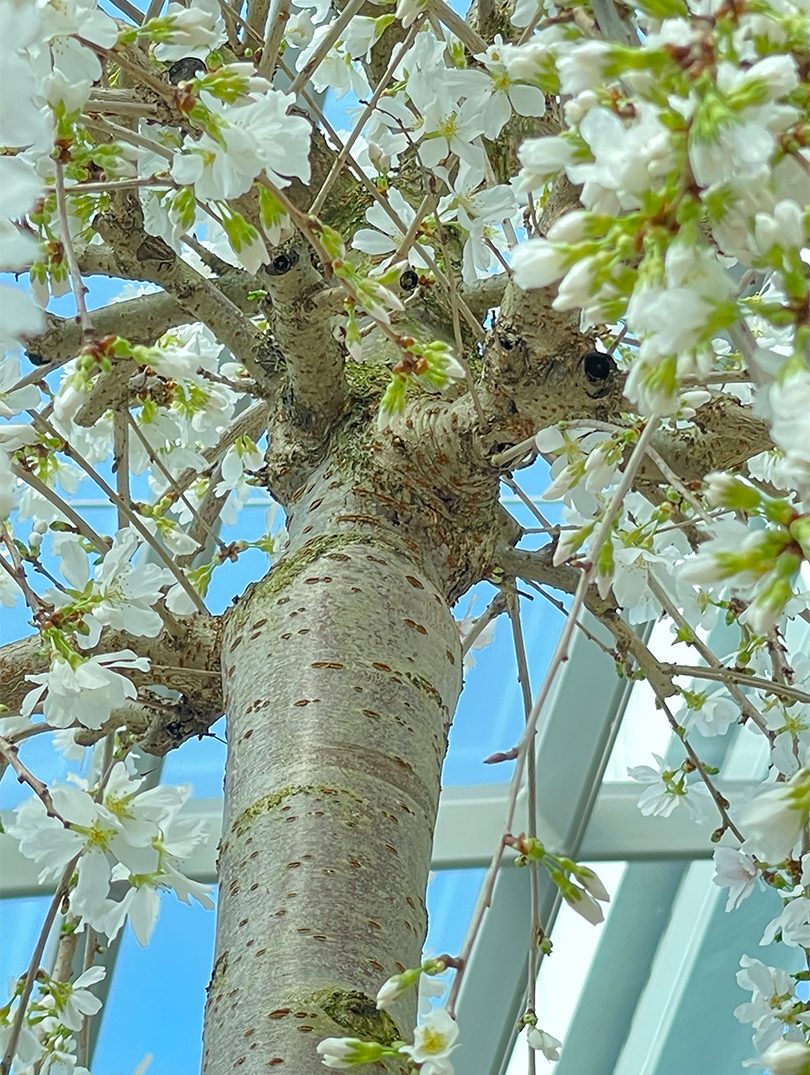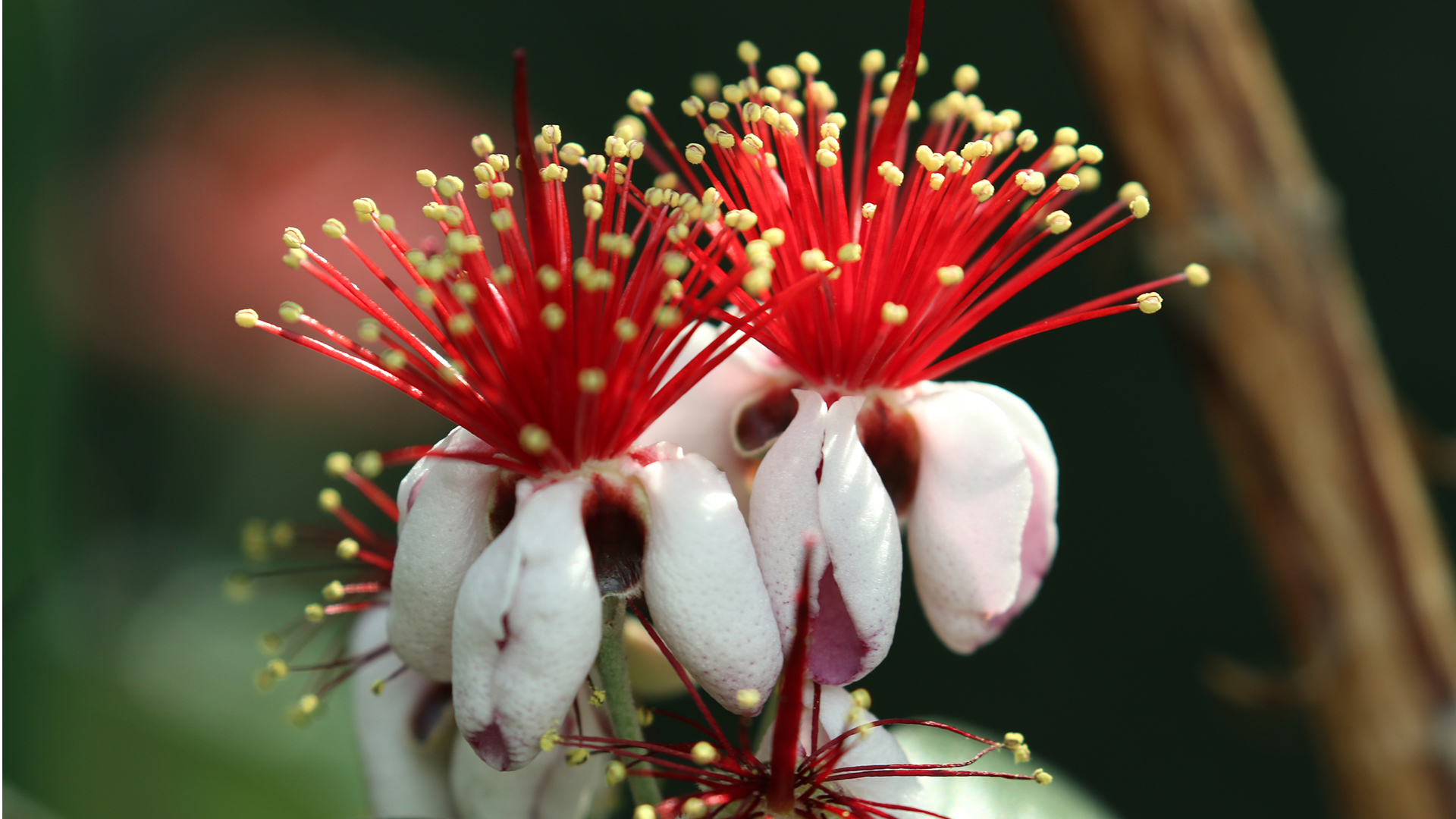Snow Fountains Flowering Cherry
(Prunus x subhirtella ‘Snow Fountains’)

Known for having a slim trunk supporting graceful, pendant branches filled with masses of white-to-pale pink single-petaled flowers, Prunus x subhirtella ‘Snow Fountains’ is actually composed of two different cherry trees grafted together!
 This particular specimen of Prunus x subhirtella ‘Snow Fountains’ shows how the oldest flowers at the op of the plant are already turning a pale pink, while the younger flowers at the bottom remain a snowy white, giving the whole tree a perfect ombré effect.
This particular specimen of Prunus x subhirtella ‘Snow Fountains’ shows how the oldest flowers at the op of the plant are already turning a pale pink, while the younger flowers at the bottom remain a snowy white, giving the whole tree a perfect ombré effect.
To create the two meter tall ‘Snow Fountains’ trees on display at Flower Dome, flowering cherry stock cuttings are grafted on top of a tall-trunked rootstock. The top part or scion is Prunus x subhirtella 'Snofozam', a naturally weeping cultivar that is itself a hybrid between two different species: the winter-flowering cherry, Prunus subhirtella and the Fuji cherry, Prunus incisa. ‘Snofozam’ is a popular cherry cultivar for its attractive weeping form and densely packed bunches of five-petaled flowers, as well as its beautiful orange and gold autumn foliage. The bottom part, called the stock or rootstock, which includes the trunk and root system is usually a sapling of the silvery-trunked Prunus avium, or sweet cherry, or the striking, copper-red trunked Tibetan cherry, Prunus serrula.
To create a grafted tree, the canopy or growing portion of the rootstock is cut off and a cutting of the scion are bound onto the trunk and sealed together so the stock and scion grow together. These grafted Prunus x subhirtella 'Snofozam' trees are often sold under the trade names ‘Snow Fountains’ or ‘White Fountains’.
 Can you see the lumpy raised area just above where the straight trunk narrows? This is called the graft union. It marks where the Prunus x subhirtella 'Snofozam' scion was grafted to the sweet cherry rootstock.
Can you see the lumpy raised area just above where the straight trunk narrows? This is called the graft union. It marks where the Prunus x subhirtella 'Snofozam' scion was grafted to the sweet cherry rootstock.
While some might prefer the natural weeping form of non-grafted Prunus x subhirtella 'Snofozam', grafted trees actually serve many purposes, namely uniformity, vigor, and variety. For these particular flowering cherries, grafting allows us to source multiple identical cloned ‘Snow Fountains’ cherries with the same characteristic, desired umbrella-shaped canopy and flower type, atop uniform two-meter trunks. Vigorous growth and disease resistance are often conferred through the selection of specific rootstock cultivars known for their strong root growth and increased resistance to various diseases, and even tolerance to environmental stresses such as heat, cold, or drought.
Many of our flowering Prunus cultivars and perennial fruit cultivars from the ‘Fuji’ apple to the Mao Shan Wang/’D197’ durian are either unique hybrids between specific cultivars or spontaneous natural mutations called ‘sports’ found on the branches of a different cultivar. To preserve and propagate these deliciously and beautifully unique varieties which will not come true from seed, the vast majority of our cultivated fruit crops, from apples to citrus, pears, peaches, and plums, even table and wine grapes are all grafted on to trunks of a related rootstock, quickly creating large stocks of uniform, cloned trees with cultivar-specific fruit characteristics. Grafting also creates the potential for endless variation between different scion and stock cultivars! Because many members of cultivated Prunus species are graft-compatible, multi-grafted ‘fruit-salad’ trees for the temperate climate home gardener, bearing different varieties of peach, apricot, cherry, and plum, all on a single tree!
Come admire the art of grafting on our identical Prunus x subhirtella ‘Snow Fountains’ trees and see if you can spot the graft union on these and our other flowering cherry cultivars at our annual sakura display in Flower Dome.
Written by: Janelle Jung, Senior Researcher (Research and Horticulture)
A transplanted pake (Hawai'i-born Chinese), she's finding her own Singaporean roots. Every plant has a story, and Janelle helps discover and share these with colleagues and guests, hoping to spark a mutual plant passion! Ask her what plant she named her cat after!


/1000x1000-thumb-pride-of-burma-1.jpg)